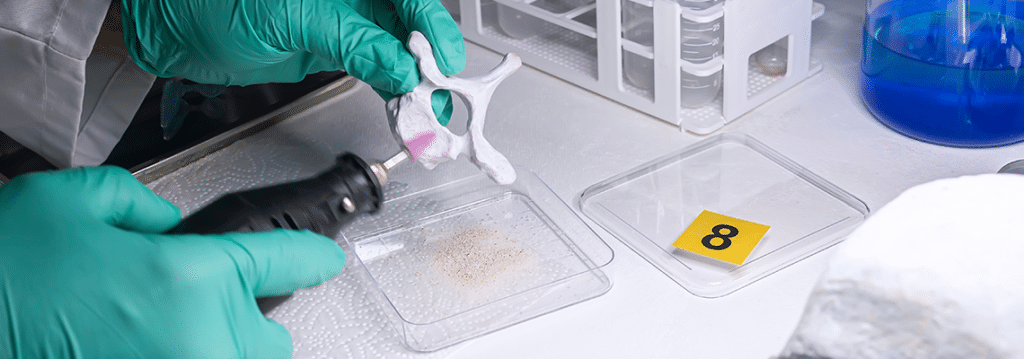
How Differential Extraction Improvements Eliminate Downstream Bottlenecks
February 16, 20201
A high-throughput forensic DNA laboratory is a complex machine. It needs maintenance to ensure that the day-to-day strain of one step in the process doesn’t reduce the efficiency of the whole. This is especially true with sexual assault casework, which has proven so vulnerable to backlogs.
For that reason, we are incredibly excited to welcome Joanne B. Sgueglia to the InnoGenomics team as Product Application Specialist. Sgueglia brings over 32 years of experience in commercial and government settings, including the Massachusetts State Police Crime Laboratory System and the Suffolk County Crime Laboratory in New York.
Recently, we sat down with Sgueglia to discuss the various
bottlenecks that could impact forensic biology laboratories. She offered some
solutions to eliminate delays in sexual assault kit analysis.
How Ineffective Methodology Hinders Interpretation Efforts
According to Sgueglia, one of the larger issues faced by DNA laboratories stems from the sample workflow’s first step—differential extraction, in which male DNA from the suspect is isolated from a sexual assault kit. This step is necessary because the sample likely contains two genetic profiles: epithelial cell DNA from the victim and seminal fluid DNA from the perpetrator.
“Differential extraction methods need to be optimized to obtain just the sperm cell DNA from the perpetrator, while washing away all the non-sperm DNA from the female victim herself,” said Sgueglia. “If you don’t have a good differential extraction technique and you’re attempting to separate the contributors, you might leave some of the epithelial layer behind (female carryover), meaning you now have a mixture of DNA.” Additionally, it is critical that the sperm pellet DNA is not removed with the epithelial fraction (male carryover) to ensure good recoveries of sperm DNA.

Differential extractions have been performed manually for decades. The process is time consuming and requires an analyst to have good technique in separation of the sperm and non-sperm fractions. If the differential extraction is inefficient, you may be generating downstream delays. For the sake of justice and public safety, the National Institute of Justice recommends that labs identify bottlenecks like these and determine whether a new processing approach would result in efficiencies.
“When mixture results are obtained, containing both the male and the female profiles, it’s very time-consuming to resolve the two components,” said Sgueglia. “However, if you get a good differential, resulting in single-source profiles, you no longer have to deconvolute.”
With a differential extraction protocol that minimizes the presence of multiple genetic profiles, interpretation and statistical analyses become straightforward. This minimizes the burden of analyst subjectivity in mixture interpretation and laborious calculations. It also allows for an expedited technical review to allow cases to be signed out of the laboratory in the most efficient manner.
Refining Methodology to Limit Time and Labor Spent on Review
Solutions to optimize antiquated human processing have led to the use of improved buffers, addition of chemicals (e.g., enzymes) to rid the sample of non-sperm cells, and/or physical means to capture sperm cells. Many of the methods are amenable to automation, which removes the human element and allows for more consistency with increased throughput.
By changing a single methodology in the wet laboratory, Sgueglia explains that you can save time that would otherwise go to deconvoluting mixtures, performing subjective interpretations and statistical analysis, and burdensome technical reviews.
A differential extraction protocol with an improved ability to separate mixtures without compromising the quality and quantity of perpetrator DNA makes a hugh difference. This results in more single-source genetic profiles being pushed downstream in the lab. The forensic community has seen improvements using optimized methods and tools such as laser microdissection, the Erase Sperm Isolation kit (PTC laboratories), QIAcube (Qiagen), DEPArray™ (Menarini Silicone Biosystems), and SpermX (InnoGenomics Technologies).

